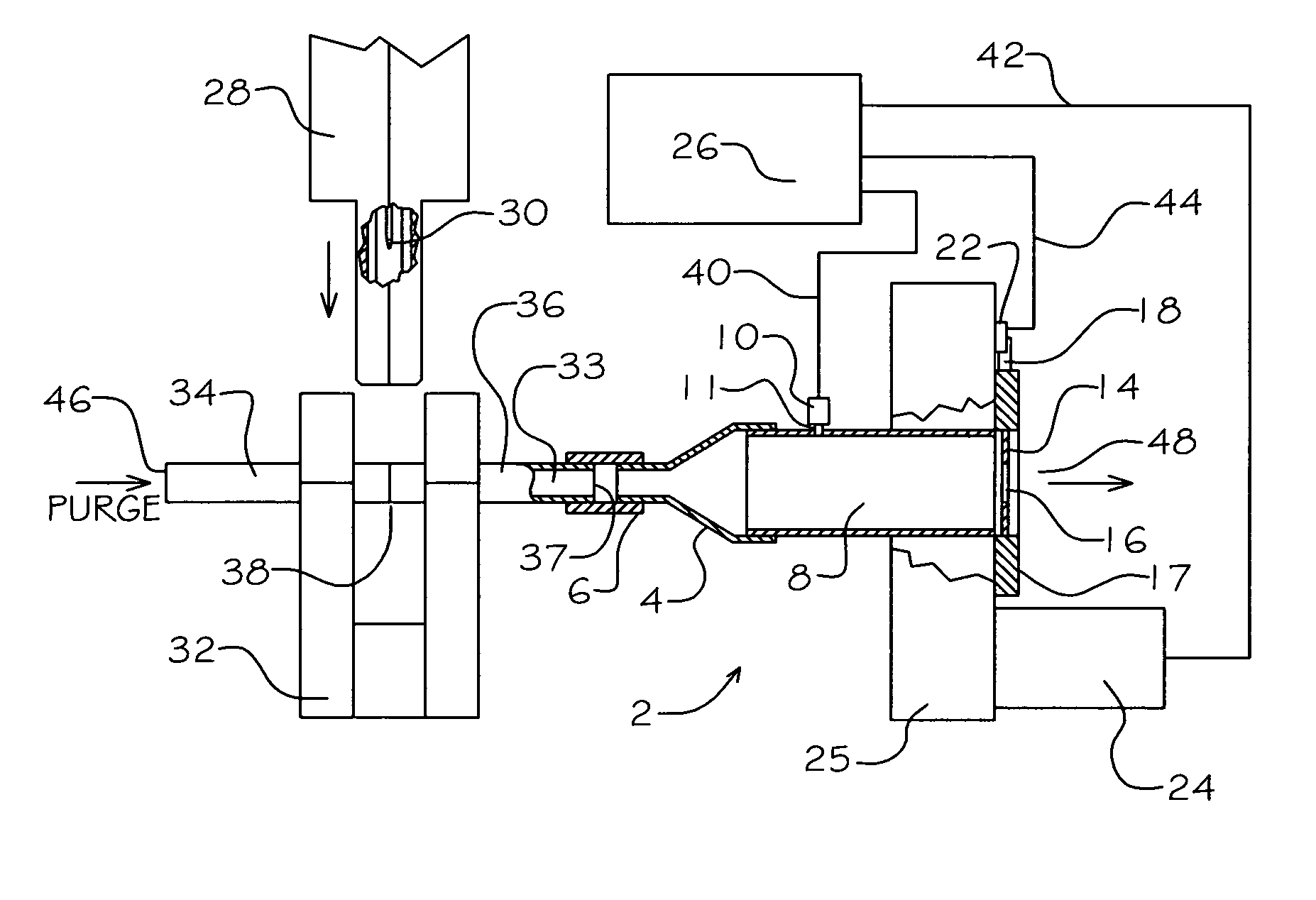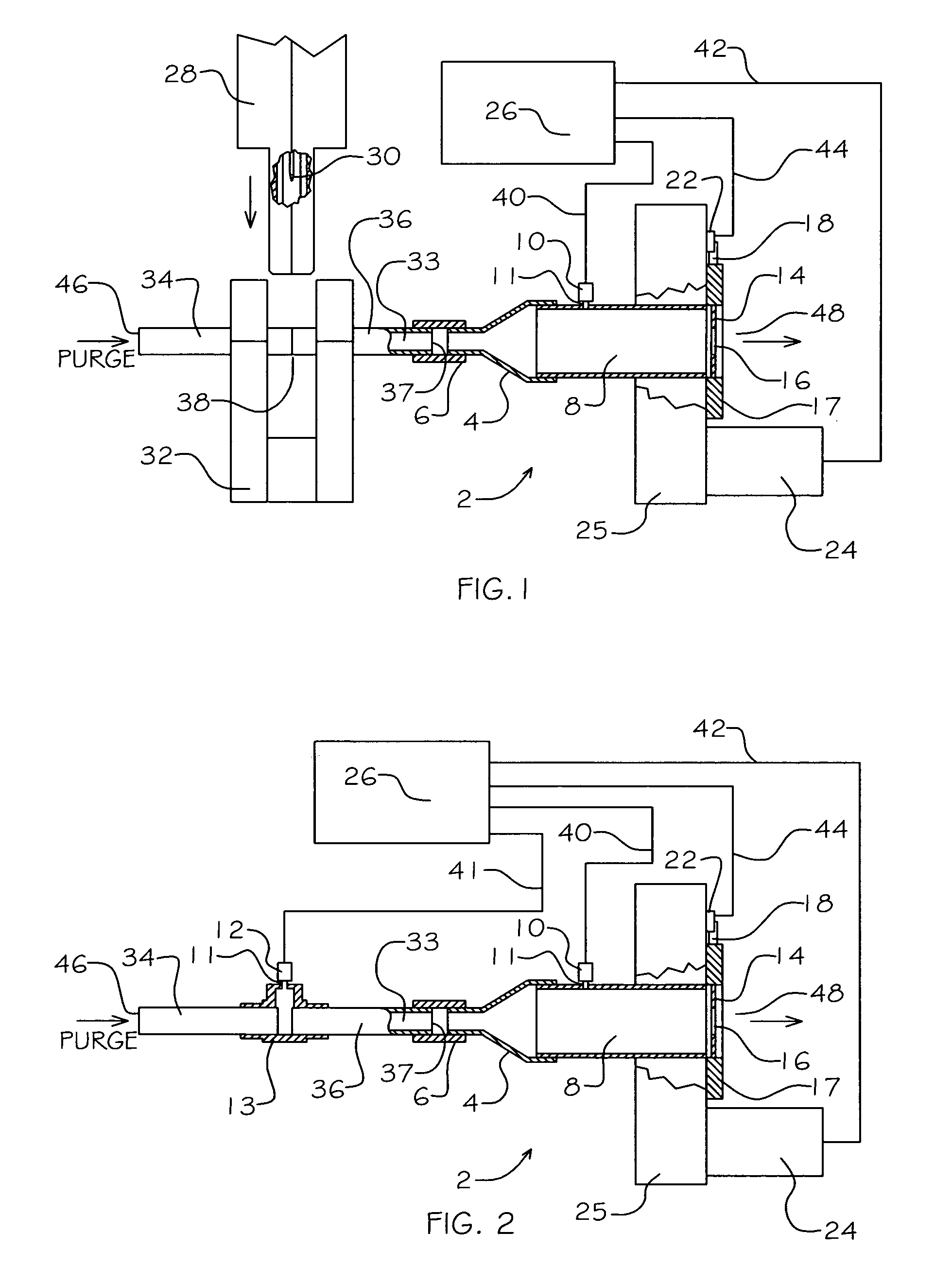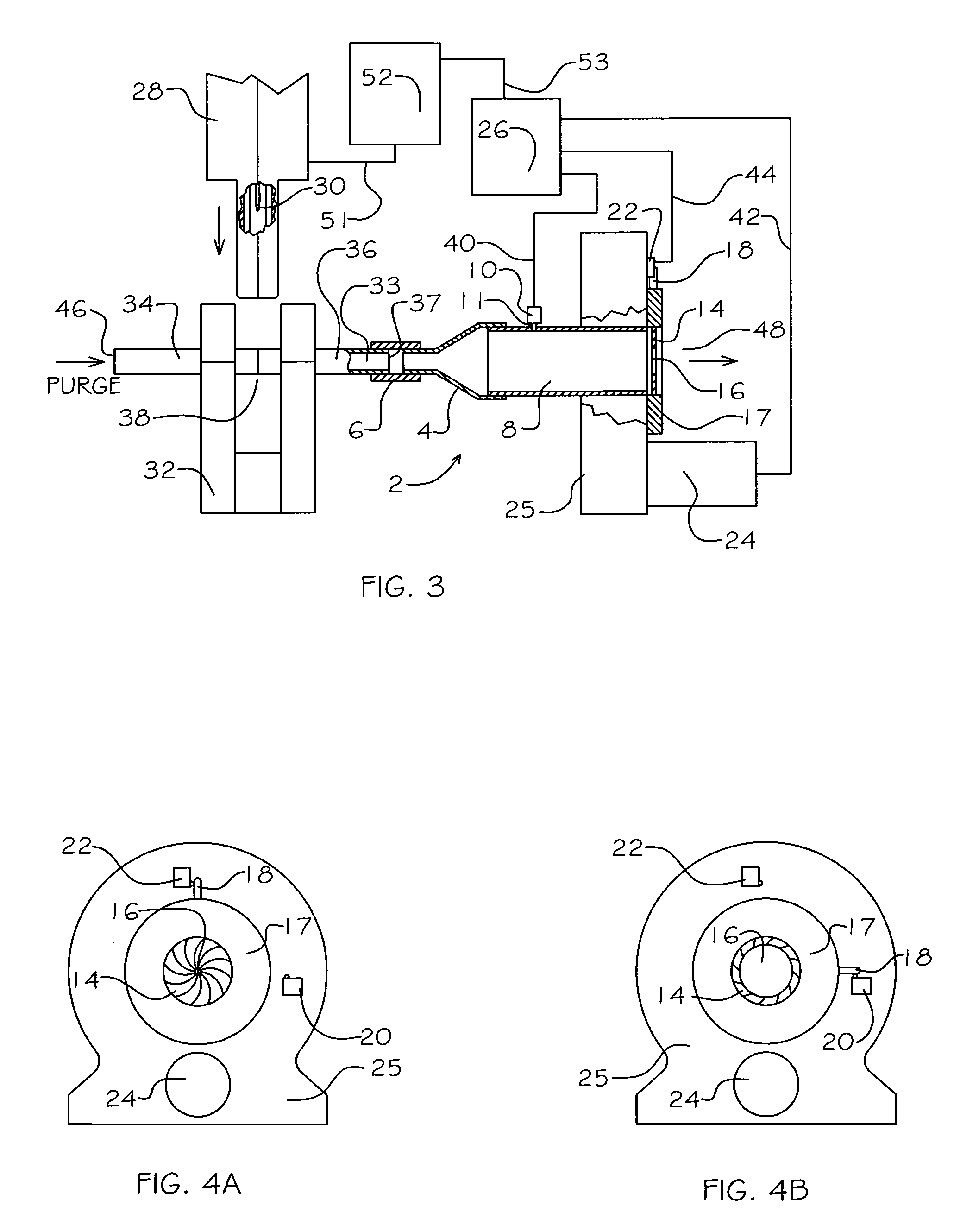Orbital welding internal pressure control
a technology of internal pressure control and orbital welding, which is applied in the direction of shielding gas supply/evacuation device, welding apparatus, manufacturing tools, etc., can solve the problems of significant and undesirable head loss in the system, weld bead may not fully envelope the internal diameter weld seam, and the internal diameter of the weld seam is reduced. , to achieve the effect of preventing this undesired deposi
- Summary
- Abstract
- Description
- Claims
- Application Information
AI Technical Summary
Benefits of technology
Problems solved by technology
Method used
Image
Examples
Embodiment Construction
[0047]The detailed description set forth below in connection with the appended drawings is intended as a description of presently-preferred embodiments of the invention and is not intended to represent the only forms in which the present invention may be constructed and / or utilized. The description sets forth the functions and the sequence of steps for constructing and operating the invention in connection with the illustrated embodiments. However, it is to be understood that the same or equivalent functions and sequences may be accomplished by different embodiments that are also intended to be encompassed within the spirit and scope of the invention.
[0048]FIG. 1 illustrates the configuration for welding tubular components utilizing the first mode of operation. When welding together two tubular components (34) and (36) with an orbital welder (28), the components are clamped securely in abutment within a welding fixture (32), with the seam (38) at the juncture of the tubular componen...
PUM
| Property | Measurement | Unit |
|---|---|---|
| angle | aaaaa | aaaaa |
| diameter | aaaaa | aaaaa |
| diameter | aaaaa | aaaaa |
Abstract
Description
Claims
Application Information
 Login to View More
Login to View More - R&D
- Intellectual Property
- Life Sciences
- Materials
- Tech Scout
- Unparalleled Data Quality
- Higher Quality Content
- 60% Fewer Hallucinations
Browse by: Latest US Patents, China's latest patents, Technical Efficacy Thesaurus, Application Domain, Technology Topic, Popular Technical Reports.
© 2025 PatSnap. All rights reserved.Legal|Privacy policy|Modern Slavery Act Transparency Statement|Sitemap|About US| Contact US: help@patsnap.com



